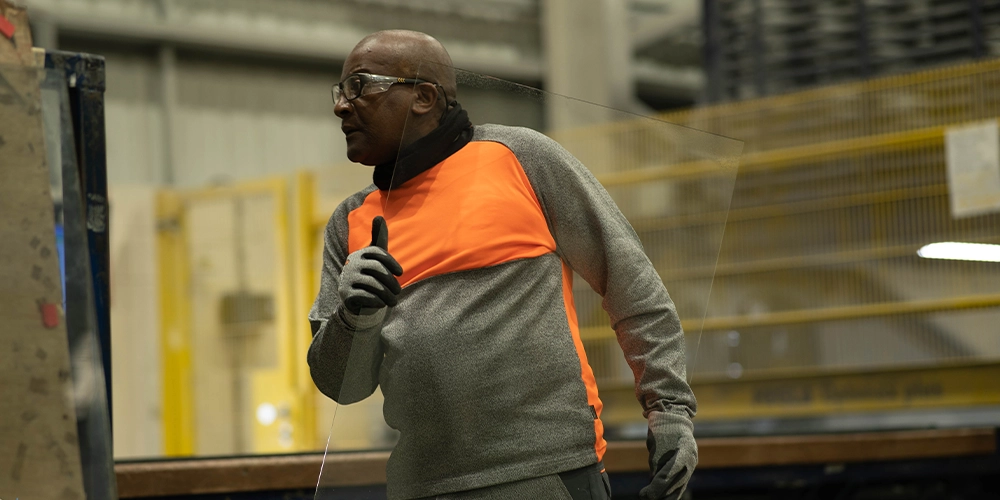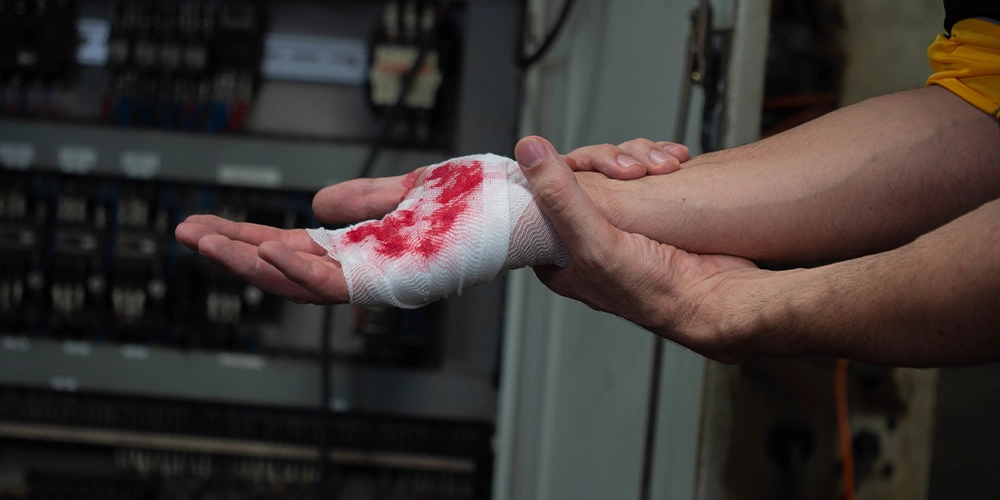Working with glass, and more importantly, working safely with glass, in any industry - whether in manufacturing, construction, or installation - requires caution and knowledge of the best safety practices. Glass can be fragile and heavy, making it both challenging and dangerous to handle if proper precautions aren’t taken. This guide covers essential aspects of glass safety, from handling techniques to the importance of personal protective equipment (PPE) and risk management strategies. For professionals in glass manufacturing, glazing, or construction, these guidelines help minimise risks and ensure workplace safety.
What are the safety precautions when using glass?
When working with glass, following safety protocols is crucial to avoid accidents and injuries. Here are key precautions:
- Wear appropriate PPE: Cut resistant clothing, safety glasses, gloves, and hard hats are essential. Cut resistant clothing prevents lacerations, while safety goggles protect your eyes from potential glass shards.
- Use proper handling tools: For heavy or large glass sheets, always use equipment like suction cups, dollies, or glass lifters. Limit manual handling to smaller pieces of glass.
- Inspect the glass before moving: Check for chips, cracks, or scratches, as even minor damage can lead to breakage and injury.
- Keep your workspace organised: A tidy area reduces trip hazards. Store glass upright in appropriate racks to prevent falling or damage.
What are the risks of handling glass?
Handling glass without proper safety measures can lead to a range of injuries. The most common risks include:
- Lacerations and punctures: Sharp edges or shattered glass can cause severe cuts that may require stitches or surgery.
- Strain and musculoskeletal injuries: Glass sheets are often heavy and awkward to carry. Improper lifting techniques can lead to sprains, strains, hernias, or muscle tears.
- Crush injuries: Mishandling large glass panes can cause them to fall or slip, resulting in crush injuries.

What are the techniques for glass handling?
To minimise the risk of injury when handling glass, adhere to these essential techniques:
- Carry glass vertically: Always carry glass upright to reduce the risk of breakage. Horizontal or flat carrying can lead to bending or cracking under the glass’s own weight.
- Use both hands: Ensure a firm grip with both hands when carrying glass. This improves control and reduces the likelihood of slippage.
- Lift with your legs, not your back: Always bend your knees, keep your back straight, and lift using your leg muscles.
- Work in pairs for large sheets: Large or heavy glass sheets should always be carried by at least two people, ensuring better balance and reduced strain.
What are two rules of glass safety?
Two fundamental rules for glass safety are:
- Always wear appropriate PPE: Cut resistant clothing, gloves, goggles, and steel-toe boots are essential for protecting yourself from cuts and injuries while working safely with glass.
- Inspect and prepare your workspace: Ensure your workspace is clear of obstacles and well-organised. Also, inspect glass for defects before handling it to prevent accidents.
How do you handle broken glass safely?
Dealing with broken glass requires extra caution to avoid injury. Here’s how to handle it safely:
- Never pick up broken glass with bare hands: Always wear gloves, preferably cut resistant ones, when dealing with broken glass.
- Use tools for cleanup: A dustpan and brush are safer for collecting broken glass than using your hands.
- Dispose of broken glass properly: Place it in a container clearly labelled “broken glass” to prevent further accidents.
How to safely move glass?
Transporting glass in a manufacturing or construction setting requires careful planning and equipment:
- Plan your route: Before moving glass, identify potential obstacles like narrow doorways or uneven surfaces.
- Use specialised equipment: For heavy or large sheets, tools such as suction cups, dollies, and carts reduce strain on workers and increase safety.
- Move slowly and carefully: Sudden movements can cause the glass to slip or break. Steady, controlled movements are essential when transporting glass.

Can you pick up glass with your hands?
While intact glass can sometimes be handled with gloves, never pick up broken glass with your hands. Always use tools such as tongs or a dustpan and brush to collect glass shards. The risk of cuts from sharp edges is too high to justify using hands and is one of the major reasons why you should ensure you and your team are aware of how to work safely with glass.
How should you carry glass?
When carrying glass:
- Always carry glass vertically: This provides more stability and reduces the risk of breakage.
- Grip the glass with both hands: A secure grip ensures better control and reduces the risk of slipping or dropping the glass.
- Be mindful of your surroundings: Clear your path of obstacles and ensure the surface is even to avoid trips or falls.
The financial risks of not handling glass safely
Beyond physical harm, improper glass handling can lead to significant financial losses. From medical bills to lost productivity and potential legal disputes, workplace injuries can have long-term financial consequences. Poorly managed safety protocols can also lead to reputational damage and increased insurance premiums. For more information, refer to our blog on the Cost of Workplace Injuries.
Unsure about the cut levels you need?
Choosing the right cut level is critical for both safety and compliance. If you're unsure what level of cut protection your team requires, read our detailed guide on ANSI Cut Levels Explained to help you make informed decisions about your PPE needs.
Working safely with glass involves a mix of proper handling techniques, the use of cut resistant PPE, and being aware of potential risks. By following these safety precautions, workers can reduce the likelihood of injuries, including cuts, strains, and crush injuries. PPE, such as gloves, safety glasses, and cut resistant clothing, plays a key role in keeping workers safe, while specialised equipment can help prevent accidents during lifting and transport.
Glass, while strong, can break suddenly and unexpectedly. Always handle it with care, use the appropriate equipment, and wear suitable protective gear to ensure a safe work environment.
For more information on glass safety or to explore our range of cut resistant clothing, contact CutPRO® or visit our website to browse our high-performance PPE for glass handling.
About the Author
If you’ve enjoyed this article, you may be interested in learning more about the work we do at CutPRO®. Robert Kaiser, our company’s Founder & CEO, is a globally respected expert in combating and mitigating violence, as well as risk management. He is also a gender-based violence specialist and the author of NEVER A VICTIM – The Definitive Guide to Women’s Safety, written after three decades of research. His recent articles include The Best Personal Safety Tips for Women.



